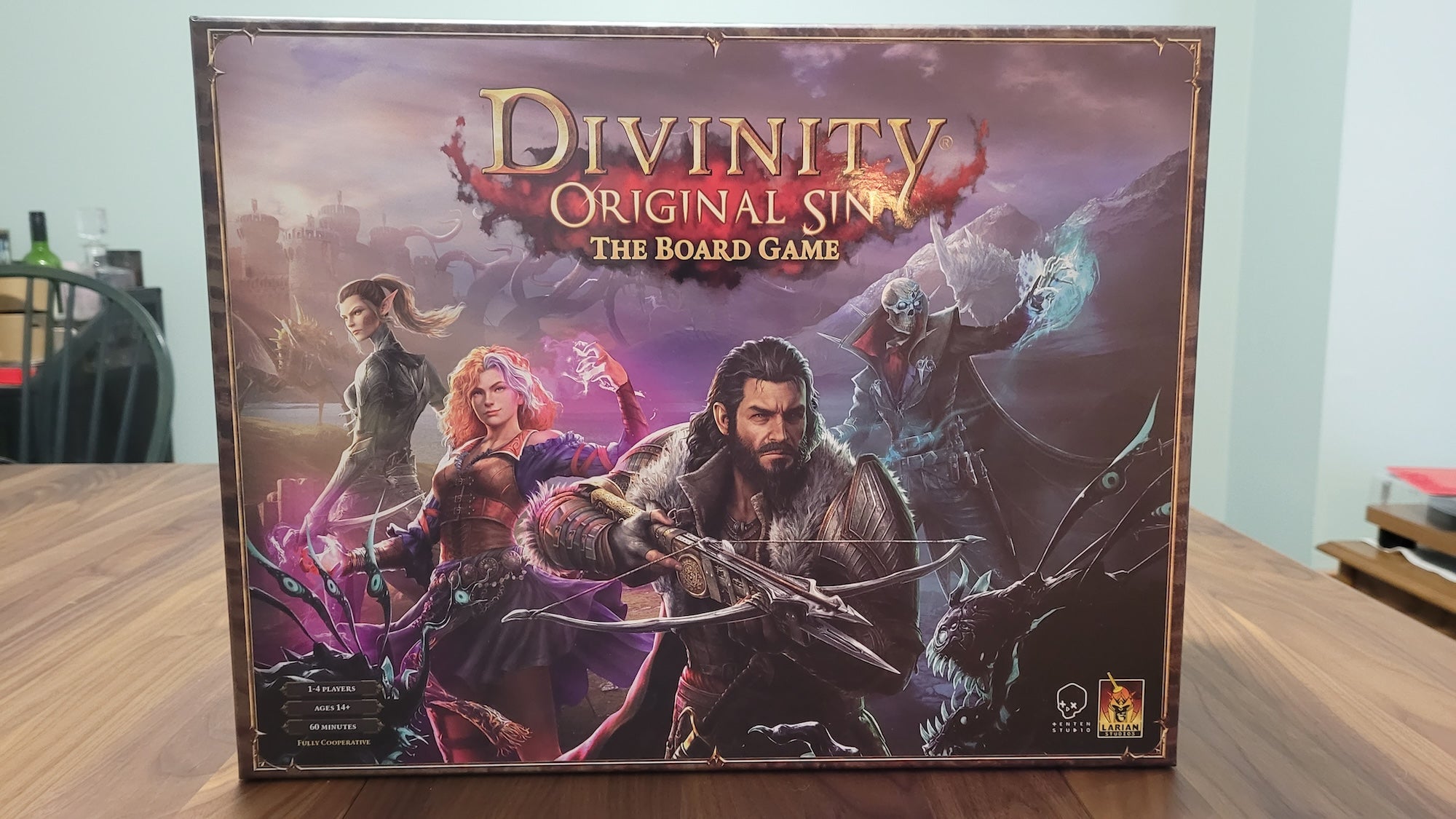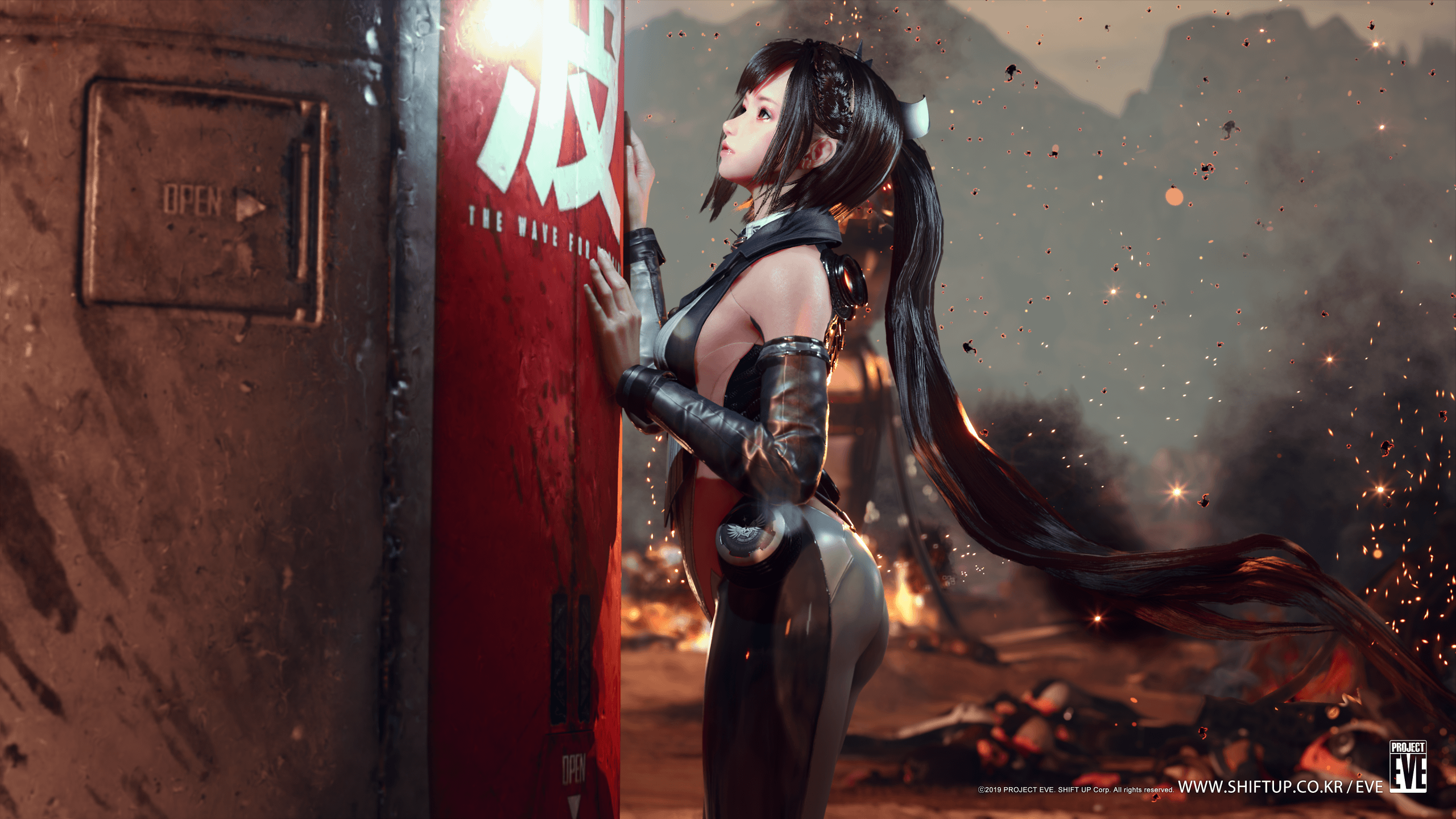While Larian Studios may be commonly known these days as the developer behind last year's mega-hit Baldur's Gate 3 (a game we really liked), Divinity: Original Sin is what put them on the map. Back in November of 2019 - in the before times - Larian launched a Kickstarter for the board game adaptation of Original Sin that would go on to great success. After a bit of a tumultuous development, Larian’s first foray into the board game realm has started reaching backers and is up for pre-order for everyone else. As someone who finished up a cooperative campaign of Original Sin 2 last year and loved it (I was the suave kleptomaniac undead rogue that absolutely pulled off a pompadour, Barnaby Bickerbacker), I was excited to see if Larian would be able to successfully adapt the heart and charm of the game in this new medium.
If you get excited over large and imposing-looking board games, then Divinity Original Sin: The Board Game will be right up your alley. Opening the box for the first time can be rather imposing with the sheer amount of stuff Larian Studios has managed to fit in the game’s box. Packed inside a box rivaling the size of Gloomhaven, you will find it filled with miniatures, dual-layered player boards, some fancy player miniatures, three large booklets (one serving as the game board, another for bosses, and the instruction booklet), more than 1,000 cards adorned with gorgeous Larian artwork that looks to have been pulled straight from the video games, and more.
Everything is neatly stored in two separate organizers that help bring some order to the chaos that comes from component-heavy games like this. These organizers are great for storing the game when it isn’t in play but are less helpful when the game is being played. The box - and subsequently the inserts - are large, and when you have the player boards and all required components splayed out, Divinity takes up a lot of space. Many of the card types are used with some frequency, and you will reach into the organizer repeatedly. Unless you have a considerably large table you are playing on, finding a place to put said organizer can be tricky. I would have loved to see smaller modular inserts for these cards, almost deck box-like, so you could spread them around the play space more efficiently.

Players start by choosing their origin, what Divinity calls its characters, either from four premade ones or creating one of their own. For the latter, the process is reasonably straightforward - first, pick your “template” origin (which dictates your background, starting stats, and eventual Source skills), then choose your four starting skill cards, a talent perk, a weapon, and a set of armor, and off you go. With 12 different schools of skills to choose from, with seven options each (two level 1, two level 2, and then a single level 3 through 6), you have plenty of customization options to pick from. However, the choices are lacking if specializing in a single school is more to your liking, as there aren’t enough options to do so. There also aren’t enough physical cards for more than one player to take the more advanced skills in a school. I would love to see both of these issues remedied, perhaps in purchasable card packs or expansions down the road.
The whole process is quick and easy enough to understand that players new to tabletop RPGs or campaign-style board games, like my wife, whom I spent the majority of my time playing through the campaign with, will be building their characters in no time. That said, I find it odd that Larian hasn’t provided listed “premade origins” for the remaining six characters that folks could use if they didn't feel like making one, and the four existing ones didn’t speak to them.

Instead of opting for maps constructed from a mess of tiles you need to sort through (looking at you, Gloomhaven, Resident Evil, and Cthulu: Death May Die), Divinity has thankfully gone the booklet route with the Divine Atlas. Inside this sizeable ringed book, you will find every Location (Divinity’s term for the level or scenario you are playing) within the base set of Divinity. When paired with each location's respective small deck of cards, you will have your gameboard. This single decision, saving me from the tedium of trying to find the specific tile I need to make the next level I am supposed to play, has made the prospect of playing Divinity so much more enticing.
The game's general flow involves exploring different areas around the given location by reading its card(s) and doing what it says until you find an exit that leads you to a new location. Cards can cause a variety of things to occur. They can reveal an exit like previously mentioned, present you with a challenge that could earn you items, story info, and other goodies, or (and perhaps the most exciting/stressful) spawn enemies for the party to deal with.

Once enemies appear, exploring goes out the window, forcing you to deal with them before you can return to discovering new things in the location. Depending on the number of characters that your party consists of, it will determine the number and type of enemies. All of this is conveniently presented to you on the location card.
Larian has devised a simple yet tactical combat system that, much like other aspects of the game, is relatively easy to pick up - though there is a bit of a learning period. When enemies spawn, the encounter on the location card will specify the speed of the foes; fast enemies will act before the players turn, and slow will act after. Each enemy will behave similarly, moving towards a target based on what they roll on a special die and then performing the action listed on their specific card.
Players have far more tricks up their sleeves, thanks to their hands of special skills and equipment. Folks who have played the Divinity: Original Sin video games will find similar systems incorporated in its board game counterpart, including Action Points (AP), cooldowns, and elemental interactions - a mechanic that the developers prioritized adapting.

Most of the complexity and learning period comes in deciphering the various symbols on your skill cards, a challenge that is eased thanks to the helpful symbol key on the back of Divinity’s instruction book. After paying the respective AP cost of your equipped weapons or skills from your pool of AP, you will roll the required dice and then place the card on your player board's cooldown track that will tick down at the start of the next round. Players can take as many actions as they have AP for, with AP being replenished at the start of each round. Points can also be banked to allow you to act more during your next turn.
For such straightforward mechanics, there is an impressive amount of strategy that players can implement - and effects that need to be taken into account when deciding on what actions to take. Skills and weapons can have a range of different properties, causing them to react or cause different elemental effects to occur in a given area that will respond differently to the other elements. For example, hitting an area afflicted with the oily earth element with fire causes additional damage and usually results in an explosion that will turn a single target attack into an AOE attack… and set people on fire. This was a relatively common occurrence during my playthrough of the video game with my friends, and I knew that Larian had managed to capture the spirit of the video game with this adaptation the moment that my wife “accidentally” set me on fire when one of her searing daggers exploded the area I was in.

Boss enemies are handled differently from your standard minion, behaving more like another player. Each boss comes with their own deck of attacks, AP, and special abilities. These enemies are menacing and always pose a challenge. I can’t think of an encounter with one that didn’t result in at least one of us getting knocked out, putting us on the back foot, but this is also what made the encounters so much fun. It should also be noted that much like the locations, you won’t fight every boss that comes in the box in a single playthrough - just as an example, there are three potential “first” boss fights you can have.
Instead of being a one-and-done campaign adventure, Divinity incentivizes and pushes you to play through it multiple times. Decisions you make will lock you out of exploring other locations, which will mean you won’t encounter enemy X and instead only enemy Y. The whole experience feels like a mix of a Dungeons & Dragons adventure and those “Choose Your Own Adventure” books you may have read as a kid. You are always at the mercy of dice rolls, you are balancing and strategizing with your team about who should take that magic item or what skills to learn, and the general sense of camaraderie is very TTRPG, but Divinity doesn’t, and frankly, can’t, have the same sense of freedom and choice as one.

I never felt like our decisions didn’t matter; they always took us down one path, but I never stopped wondering what was down the one we didn’t take. The bosses we didn’t face. The stories we didn’t hear. Even though it’s a long story, I can’t wait to jump back in with a brand-new character and see what I missed the first time around.







